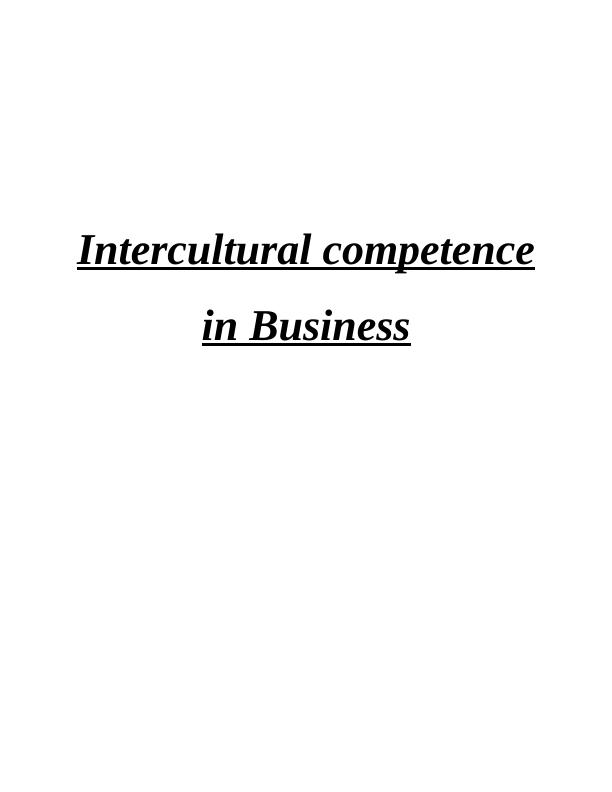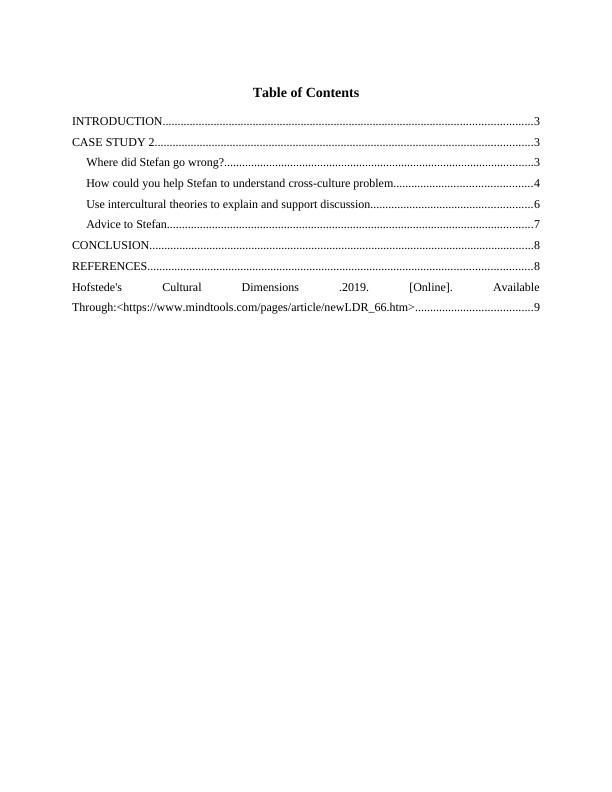Intercultural Competence in Business
Added on 2023-01-18
10 Pages2536 Words88 Views
End of preview
Want to access all the pages? Upload your documents or become a member.
Case Study on Intercultural Competences
|8
|2550
|60
Intercultural Management in Business: A Case Study of Cross-Cultural Problems Faced by Stefan Phillips in Saudi Arabia
|11
|2712
|251
Intercultural Competence in Business
|8
|2281
|77
Intercultural Competence in Business
|9
|2577
|28
Intercultural Competence in Business: Case Study 2 MAR0131
|10
|1768
|354
Intercultural Competence in Business: Case Study Analysis
|9
|1928
|333



